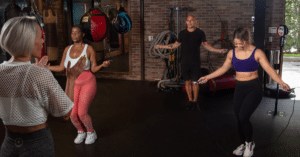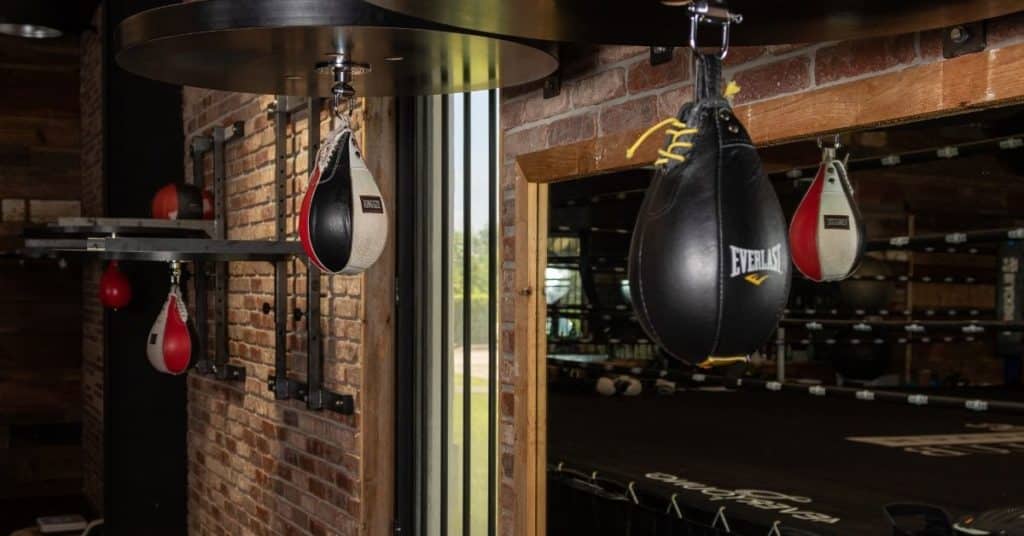
The Benefits of Jump Rope Training in Boxing
Boxing is not just about throwing punches, it is a sport that requires proper footwork, timing, and quickness. One of the best

Tired of being punched around? Or perhaps you’re just searching for a fun way to stay in shape? Whatever the case may be, boxing is a great sport that helps fighters get to the next level. Boxers may receive a significantly greater workout than most regular gym routines. We would like to assume it’s because a treadmill or elliptical machine can’t punch you in the face. When your partner is charging toward you with punches, our bodies work considerably harder. If you’re reading this blog, Delray Beach Boxing Club would like to personally congratulate you on embarking on such a momentous journey. Aside from that, you’re likely thinking about what you should do to train like a pro and improve your boxing skills. Anybody could look good pounding a punching bag, but being able to stand your ground in a physical fight or boxing contest is an entirely different story. Want to look like the “trained guy” vs the “average Joe,” then your search is over! We will go through all of the foundations of boxing training in this blog. Take this advice, assimilate the knowledge, and begin using what you’ve learned on how to train like a pro boxer.
Before undertaking boxing, you should have a solid fitness routine. That being said, you don’t have to be able to run a whole marathon. Instead, we ask that you should have sufficient endurance and stamina.
Boxing training is quite taxing on the body. Therefore, to get the most out of your exercise and keep perfect technique, you must avoid severe exhaustion.
It’s key to be in reasonable shape because you need to keep up with training, sparring, and so on. As you exercise your body, heart and muscles will learn to use oxygen more effectively. Another reason to concentrate on your conditioning initially is to prevent injury.
By exposing your body to resistance and cardio training, you will develop your muscles as well as your tendons and ligaments. This is the most effective method of avoiding injury. Stepping into a boxing session as your first exercise is equivalent to diving into the deep end of water without understanding how to swim.
Master your footwork before focusing on complex combos and strikes. Let’s start at the bottom and work our way up. Footwork maybe a friend or a foe; when used correctly, it generates possibilities. On the other side, if you make a poor step, you may end up getting knocked out.
Stance – You must first establish which arm is your strongest in order to select your posture. You should always have your poor side towards your opponent so that you can fire up your defensive side. If your right hand is your dominant hand, you should have an orthodox position.
In an orthodox stance, your left foot is placed in front of your right foot. For increased stability and movement, space your feet 12 to 16 inches out. When your left hand is your dominant hand, you have a southpaw posture. Your right foot is ahead of your left foot in a southpaw stance, and your feet are spaced.
Because most boxers are right-handed, southpaw fighters may have a little leverage. Most boxers will be thrown off by a left-handed dominating fighter unless your challenger has worked with both orthodox and southpaw boxers.
Mobility – You will improve your balance and footwork by equally spreading the weight on both feet and keeping on your toes. If you are hit with a forceful blow on flat feet, you are more prone to lose your stability. Staying on your toes also permits you to move around rapidly.
Boxing is all about openings; it’s about identifying the correct ones and understanding when not to act. If you identify an opening in your opponent’s defense, you want to be able to take advantage of it as soon as possible.
To protect yourself against body shots, you should always keep both gloves up by your chin and your elbows near to your sides. The majority of knockouts come as a result of a powerful strike to the chin, which is why it is referred to as the “button” in the boxing world.
You may lessen your chances of being punched by always keeping your hands up. A pro-tip of a highly exhausted fighter is one who cannot keep his or her boxing gloves up to defend his or her chin. When you notice this, take advantage of the opportunity.
Simply said, you should be blocking with one hand while striking with the other. Assume you’re throwing a jab from an orthodox posture, with your left hand attacking and your right hand up by your chin. The inverse is likewise true, and this applies to almost every form of boxing technique. Stay vigilant at all times!
One of the most evident characteristics of an experienced boxer is one that the inexperienced eye does not see. It can be recognized by a good boxer or boxing fanatic, but it often goes unnoticed by a majority of people. We’re referring to head movement.
You don’t need to block any punches if you have good head movement since none of them will strike their target. This, however, takes years of skill. Do yourself a solid and begin studying the appropriate head movement to make yourself a more difficult target.
Studying elite athletes highlights like Floyd Mayweather Jr. and Anderson Silva who have perfected their head movements. Silva usually lowered both of his hands and baited his opponents into exhaustion with a slew of failed blows. Afterward, he would take them out with counter shots. Expect to struggle with this for the first several months, but keep it in mind.
Some individuals believe that a solid defense is a powerful offense, while others believe that focusing on defensive mechanisms while their opponent punches would tire them out. The fact is that you must establish your own style by discovering what works for you. If your fighting strategy is to come out aggressive and drive the pace of the battle, make sure to pick and choose your shots carefully and always be prepared to defend against a counter-attack.
If you are more of a defensive fighter, you will have to concentrate on your mobility, footwork, and other methods to wear your target down. Defensive fighters often land fewer strikes in total, rather they wait for a chance to land a more impactful blow. The unexpected strikes are the ones that hurt the most.
When you master the fundamentals, such as footwork, defending, and sliding, openings for attacks will begin to open up. A skilled boxer understands better than to carelessly swing and hope for an uppercut. Boxing is a systematic, calculated sport. A skilled boxer will examine his opponent within the first few minutes of the fight to determine his opponent’s strengths and what makes him uncomfortable, as well as to determine his range.
The ability to remain cool and collected in the face of adversity is what distinguishes a decent boxer from a great boxer.
Sparring is perhaps the finest type of boxing training you can do. While training on a punching bag or focus mitts might help you acquire fundamental abilities, none of these exercises can mimic a genuine combat experience like sparring with an opponent.
Also, don’t start sparring on your first day. Take the time to understand the fundamentals and how to defend yourself. Also, be sure to get to know your trainers and workout partners.
At Delray Beach Boxing Club our coaches assess each trainee’s skill level and personality. They later pair them with sparring partners who will complement each other effectively.
This is by no means a comprehensive guide to becoming a great boxer. Boxing is not always a science, as most people believe. It is more of an art form. Art is a never-ending quest, and you will never totally perfect your art since there is so much to master.
Reading this blog on how to train like a pro boxer will not turn you into a great boxer overnight. However, it will provide you with some basic information and things to look for throughout your conditioning work.
Our programs blend boxing basics with an aggressive exercise approach. You’ll learn everything from jab, cross, and hook to sophisticated footwork. Combining fitness with the art of boxing through demonstration and training one-on-one, with partners, or as a group with each student. This method of training and conditioning the body prepares it for maximum athletic performance.

Boxing is not just about throwing punches, it is a sport that requires proper footwork, timing, and quickness. One of the best

Boxing is a great way to get fit and stay in shape. It has been around for centuries, and yet it is

Are you looking to get into the exciting world of boxing? Choosing the right boxing gym is essential to achieving your goals,

Boxing is not just about throwing punches, it is a sport that requires proper footwork, timing, and quickness. One of the best ways to enhance

Boxing is a great way to get fit and stay in shape. It has been around for centuries, and yet it is still one of

Are you looking to get into the exciting world of boxing? Choosing the right boxing gym is essential to achieving your goals, whether it’s to
Considering membership? Give us your email and we’ll send you a voucher for a complimentary class. The first one is on the house!